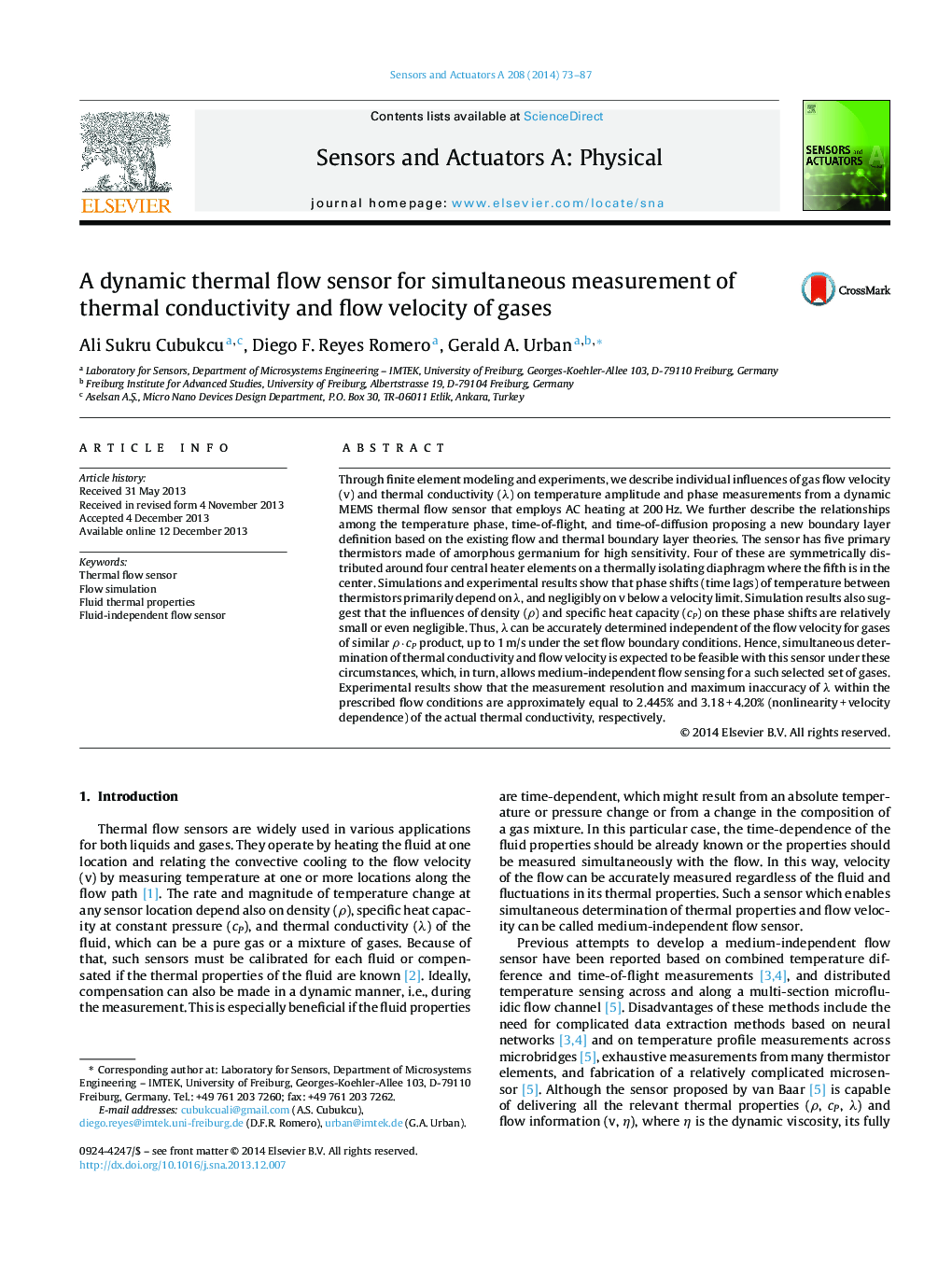| کد مقاله | کد نشریه | سال انتشار | مقاله انگلیسی | نسخه تمام متن |
|---|---|---|---|---|
| 739434 | 1461892 | 2014 | 15 صفحه PDF | دانلود رایگان |
• A dynamic MEMS thermal flow sensor was simulated and characterized by measurements.
• Individual influences of fluid thermal conductivity and flow velocity are presented.
• AC heating at 200 Hz shows a potential for medium-independent flow sensing.
• Temperature amplitude & phase can be used to extract thermal conductivity & velocity.
• A new sublayer theory is proposed to describe phase behavior.
Through finite element modeling and experiments, we describe individual influences of gas flow velocity (v) and thermal conductivity (λ) on temperature amplitude and phase measurements from a dynamic MEMS thermal flow sensor that employs AC heating at 200 Hz. We further describe the relationships among the temperature phase, time-of-flight, and time-of-diffusion proposing a new boundary layer definition based on the existing flow and thermal boundary layer theories. The sensor has five primary thermistors made of amorphous germanium for high sensitivity. Four of these are symmetrically distributed around four central heater elements on a thermally isolating diaphragm where the fifth is in the center. Simulations and experimental results show that phase shifts (time lags) of temperature between thermistors primarily depend on λ, and negligibly on v below a velocity limit. Simulation results also suggest that the influences of density (ρ) and specific heat capacity (cP) on these phase shifts are relatively small or even negligible. Thus, λ can be accurately determined independent of the flow velocity for gases of similar ρ · cP product, up to 1 m/s under the set flow boundary conditions. Hence, simultaneous determination of thermal conductivity and flow velocity is expected to be feasible with this sensor under these circumstances, which, in turn, allows medium-independent flow sensing for a such selected set of gases. Experimental results show that the measurement resolution and maximum inaccuracy of λ within the prescribed flow conditions are approximately equal to 2.445% and 3.18 + 4.20% (nonlinearity + velocity dependence) of the actual thermal conductivity, respectively.
Journal: Sensors and Actuators A: Physical - Volume 208, 1 February 2014, Pages 73–87
